
“It is very clear that high performing systems generally have a high performing teacher population.” — Andreas Schleicher
Capital profissional, Andrew Hargreaves’ and Michael Fullan’s recently released book, proposes an action plan for teachers, administradores, escolas, distritos, and state and federal leaders as to how to create a 21st century generation of professional teachers.
Countries around the world are undertaking reforms to better prepare teachers to teach in 21st century classrooms. Today in part four of our series, A Pesquisa Global para a Educação – Em busca de profissionais, I have asked Andreas Schleicher, given his extensive global educational perspective, to weigh in on what the US and other nations can learn from some of the high performing education systems that are doing this.
Andreas Schleicher is Deputy Director for Education and Special Advisor on Education Policy to the OECD’s Secretary-General. Ele também fornece uma visão estratégica sobre o trabalho da OCDE sobre o desenvolvimento e utilização de competências e os seus resultados sociais e econômicos. Isso inclui o Programa Internacional de Avaliação de Alunos (PISA), Inquérito da OCDE de competências dos adultos (PIAAC), Ensino OCDE e Pesquisa Internacional de Aprendizagem (TAL), e para o desenvolvimento e análise de parâmetros de referência sobre o desempenho dos sistemas de ensino (INES).
What steps or changes do you believe we should make in the US in order to further advance the quality of teachers and the teaching profession going forward?
Part of the answer lies in the changes in the demands placed on teachers. In every country, there have always been great teachers, and many of us are here today because we had great teachers. But what is fundamentally different today is that education systems now need to equip all teachers, and not just some, for effective learning. No passado, when you only needed a small slice of well-educated workers, it was sufficient, and perhaps efficient, for governments to invest a large sum into a small elite to lead the country. But the social and economic cost of low educational performance has risen very substantially and the best performing education systems now get all young people to leave school with strong foundation skills, which is what you see in the PISA results. When you could still assume that what you learn in school will last for a lifetime, teaching content and routine cognitive skills was at the center of education. Hoje, where you can access content on Google, where routine cognitive skills are being digitized or outsourced, and where jobs are changing rapidly, education systems need to enable people to become lifelong learners, to manage complex ways of thinking and complex ways of working that computers can’t take over easily. That requires a very different caliber of teachers. When teaching was about explaining prefabricated content, you could tolerate low teacher quality. And when teacher quality was low, governments tended to tell their teachers exactly what to do and exactly how they wanted it done, using prescriptive methods of administrative control and accountability. What you see in the most advanced systems now is that they have made teaching a profession of high-level knowledge workers, e essa, not higher salaries, is what makes teaching so attractive in countries as different as Finland, Japan or Singapore. But people who see themselves as candidates for the professions are not attracted by schools organized like an assembly line, with teachers working as interchangeable widgets. You therefore see a very different work organization in high performing systems, with the status, professional autonomy, and the high-quality education that go with professional work, with effective systems of teacher evaluation and with differentiated career paths for teachers. That is perhaps the biggest challenge for the US.
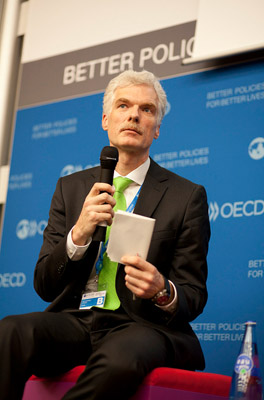
In general what common characteristics have you observed in the high performing systems relative to their teaching profession?
High performing systems have common characteristics:
- Their teachers are well-versed in the subjects they teach and adept at using different methods and, if necessary, changing their approaches to optimize learning.
- They have a rich repertoire of teaching strategies, the ability to combine approaches, and the knowledge of how and when to use certain methods and strategies.
- Their teachers have a deep understanding of how learning happens, em geral, and often also of their individual students’ motivations, emotions and lives outside the classroom, em particular.
- Their teachers work in highly collaborative ways, with other teachers and professionals or para-professionals within the same organization, or with others in other organizations, in networks of professional communities and in different partnership arrangements, Incluindo, for some, mentoring teachers.
- In some countries teachers acquire strong technology skills and skills to use technology as effective teaching tools, both to optimize the use of digital resources in their teaching and to use information-management systems to track student learning.
- Their teachers have the capacity to help design, lead, manage and plan learning environments in collaboration with others.
- Por último, mas não menos importante, their teachers reflect on their practices in order to learn from their experience.
Consider three advanced education systems: Finlândia, Cingapura e Japão. What do you see as the strengths of the Finnish system?
Teacher education in Finland has several distinguishing qualities:
- It is research based. Teacher candidates are not only expected to become familiar with the knowledge base in education and human development, but they are required to write a research-based dissertation as the final requirement for the masters degree. The rationale for requiring a research-based dissertation is that teachers are expected to engage in disciplined inquiry in the classroom throughout their teaching career.
- It has a strong focus on developing pedagogical content knowledge. Traditional teacher preparation programs too often treat good pedagogy as generic, assuming that good questioning skills, por exemplo, are equally applicable to all subjects. Because teacher education in Finland is a shared responsibility between the teacher education faculty and the academic subject faculty, there is substantial attention to subject-specific pedagogy for prospective primary as well as upper-grade teachers.
- There is ample training for all Finnish teachers in diagnosing students with learning difficulties and in adapting their instruction to the varying learning needs and styles of their students.
- It has a very strong clinical component. Os professores’ preparation includes both extensive course work on how to teach – with a strong emphasis on using research based on state-of-the-art practice – and at least a full year of clinical experience in a school associated with the university. These model schools are intended to develop and model innovative practices, as well as to foster research on learning and teaching.

What are your thoughts on the Singapore system?
Singapore is easy to understand because the system is well documented and highly institutionalized. Singapore’s National Institute for Education as a university-based teacher education institution provides the theoretical foundation to produce “thinking teachers” but has strong partnerships with key stakeholders and the schools to ensure strong clinical practice and realities of professionalism in teacher development. Singapore’s new TE21 Model seeks to enhance key elements of teacher education, including the underpinning philosophy, currículo, desired outcomes for our teachers, and academic pathways. These are considered essential prerequisites in meeting the challenges of the 21st century classroom. Their model focuses on three value paradigms: Learner-centered, Teacher Identity and Service to the Profession and Community. Learner-centered values puts the learner at the centre of teachers’ work by being aware of learner development and diversity, believing that all youths can learn, caring for the learner, striving for scholarship in content teaching, knowing how people learn best, and learning to design the best learning environment possible. Teacher identity values refer to having high standards and strong drive to learn in view of the rapid changes in the education milieu, to be responsive to student needs. The values of service to the profession and community focuses on teachers’ commitment to their profession through active collaborations and striving to become better practitioners to benefit the teaching community. The model also underscores the requisite knowledge and skills that teachers must possess in light of the latest global trends, and to improve student outcomes.
Finally what are your thoughts on the Japanese System?
What’s interesting in Japan is their approach to build on the knowledge of the profession, through regular lesson studies in which all teachers take part. The Japanese tradition of lesson study in which groups of teachers review their lessons and how to improve them, in part through analysis of student errors, provides one of the most effective mechanisms for teachers’ self-reflection as well as being a tool for continuous improvement. Observers of Japanese elementary school classrooms have long noted the consistency and thoroughness with which a math concept is taught and the way in which the teacher leads a discussion of mathematical ideas, both correct and incorrect, so that students gain a firm grasp on the concept. This school-by-school lesson study often culminates in large public research lessons. Por exemplo, when a new subject is added to the national curriculum, groups of teachers and researchers review research and curriculum materials and refine their ideas in pilot classrooms over a year before holding a public research lesson, which can be viewed electronically by hundreds of teachers, researchers and policymakers. The tradition of lesson study in Japan also means that Japanese teachers are not alone. They work together in a disciplined way to improve the quality of the lessons they teach. That means that teachers whose practice lags behind that of the leaders can see what good practice is. Because their colleagues know who the poor performers are and discuss them, the poor performers have both the incentive and the means to improve their performance. Since the structure of the East Asian teaching workforce includes opportunities to become a master teacher and move up a ladder of increasing prestige and responsibility, it also pays the good teacher to become even better.
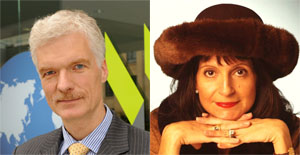
Photos courtesy of the OECD.
Na busca Global para a Educação, se juntar a mim e líderes de renome mundial, incluindo Sir Michael Barber (Reino Unido), Dr. Michael Bloco (US), Dr. Leon Botstein (US), Professor Clay Christensen (US), Dr. Linda, Darling-Hammond (US), Dr. Madhav Chavan (Índia), Professor Michael Fullan (Canadá), Professor Howard Gardner (US), Professor Yvonne Hellman (Holanda), Professor Kristin Helstad (Noruega), Jean Hendrickson (US), Professor Rose Hipkins (Nova Zelândia), Professor Cornelia Hoogland (Canadá), Senhora. Chantal Kaufmann (Bélgica), Dr. Eija Kauppinen (Finlândia), Secretário de Estado Tapio Kosunen (Finlândia), Professor Dominique Lafontaine (Bélgica), Professor Hugh Lauder (Reino Unido), Professor Ben Levin (Canadá), Professor Barry McGaw (Austrália), Shiv Nadar (Índia), Professor R. Natarajan (Índia), Dr. PAK NG (Cingapura), Dr. Denise Papa (US), Sridhar Rajagopalan (Índia), Dr. Diane Ravitch (US), Sir Ken Robinson (Reino Unido), Professor Pasi Sahlberg (Finlândia), Andreas Schleicher (PISA, OCDE), Professor Dr.. Wolfgang Schneider (Alemanha), Dr. Anthony Seldon (Reino Unido), Dr. David Shaffer (US), Dr. Kirsten Immersive Are (Noruega), Chanceler Stephen Spahn (US), Yves Theze (Francês Lycee EUA), Professor Charles Ungerleider (Canadá), Professor Tony Wagner (US), Sir David Watson (Reino Unido), Professor Dylan Wiliam (Reino Unido), Dr. Mark Wormald (Reino Unido), Professor Theo Wubbels (Holanda), Professor Michael Young (Reino Unido), e Professor Minxuan Zhang (China) como eles exploram as grandes questões da educação imagem que todas as nações enfrentam hoje. A Pesquisa Global para Educação Comunitária Página
C. M. Rubin é o autor de duas séries on-line lido pelo qual ela recebeu uma 2011 Upton Sinclair prêmio, “A Pesquisa Global para a Educação” e “Como vamos Leia?” Ela também é autora de três livros mais vendidos, Incluindo The Real Alice no País das Maravilhas.


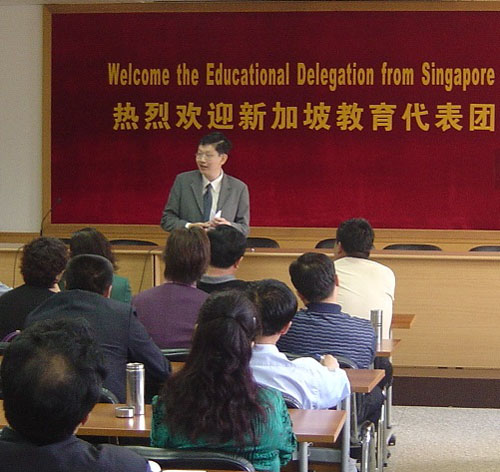
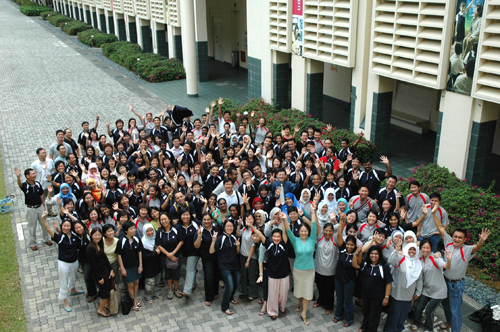
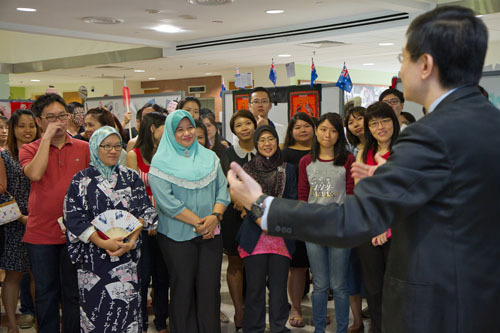
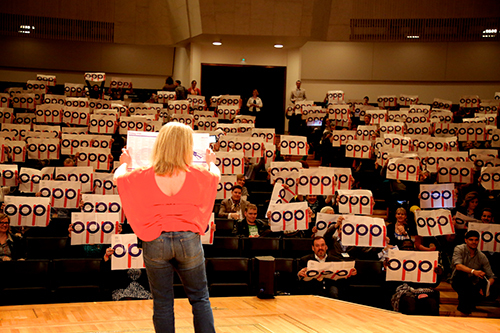
Comentários Recentes